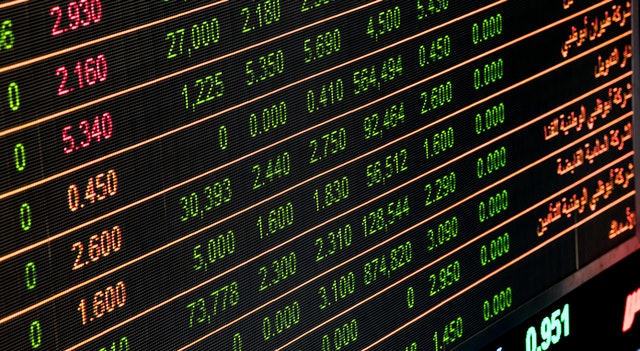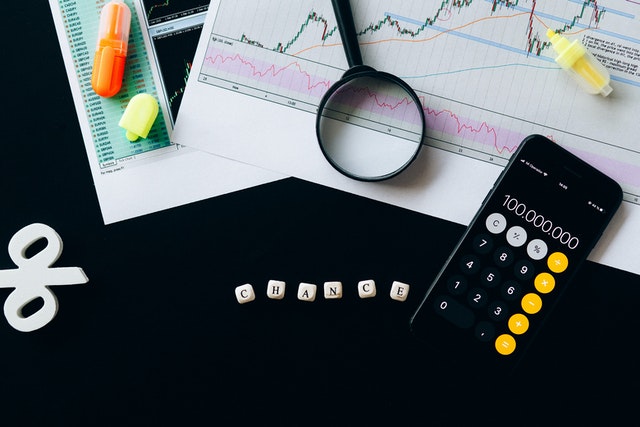Forex trading: What is it?
Foreign exchange, or forex, may be defined as a network of buyers and sellers who exchange currencies at a set rate. If you have ever been overseas, it’s probable that you have engaged in some kind of forex transaction. It is the process through which people, businesses, and central banks change one currency into another.
While a lot of currency conversion is done for practical reasons, the great majority is done with the intention of making a profit. Some currencies’ price swings might be particularly erratic due to the volume of money that is exchanged each day. This volatility, which increases both the danger and the potential for huge returns, is what may make forex trading so alluring to traders.
How do currency markets operate?
In contrast to dealing in shares or commodities, forex trading occurs directly between two parties in an over-the-counter (OTC) market. A worldwide network of banks that are dispersed across four significant forex trading hubs in various time zones—London, New York, Sydney, and Tokyo—run the forex market. You can trade FX whenever you want since there is no central hub.
The FX market is divided into three categories:
Spot FX market: a currency pair is physically exchanged at the precise moment the deal is finalised, or “on the spot,” or within a short amount of time.
In the forward foreign exchange market, a contract is made to purchase or sell a certain quantity of a currency at a predetermined price. The contract is settled at a predetermined future date or a range of future dates.
Futures FX market: A contract to buy or sell a specified quantity of a specified currency at a specified price and date in the future is made. A futures contract, in contrast to forwards, is legally binding.
The majority of traders who speculate on forex prices do not intend to take delivery of the actual currency; instead, they forecast exchange rates in order to profit from changes in market pricing.
What do base and quote currencies mean?
The first currency specified in a forex pair is referred to as the base currency, and the second currency is referred to as the quote currency. The price of a forex pair is the amount one unit of the base currency is worth in the quotation currency. Since selling one currency to acquire another is a constant component of forex trading, it is quoted in pairs.
Each of the two currencies in the pair is identified by a three-letter code, which typically consists of two letters denoting the area and one letter denoting the currency. For instance, the currency pair GBP/USD entails purchasing the British pound and selling the US dollar.
The base currency in the example below is GBP, while the quotation currency is USD. A pound is worth 1.35361 dollars if the GBP/USD exchange rate is 1.35361.
The price of the pair will climb if the value of the pound relative to the dollar increases, making one pound worth more dollars. The price of the pair will fall if it does. Therefore, you may purchase the pair if you believe that the base currency in a pair will likely strengthen versus the quotation currency (going long). Selling the pair is an option if you anticipate a decline (going short).

Most suppliers divide pairings into the following groups to maintain order:
Hefty pairs: Seven currencies account for 80% of all forex trading worldwide. comprises the EUR/USD, USD/JPY, GBP/USD, USD/CHF, USD/CAD, and AUD/USD exchange rates.
Smaller pairs: These are less often traded and typically pit major currencies against one another rather than the US dollar. includes: GBP/JPY, EUR/CHF, and USD/GBP
Exotics: a significant currency vs one from a developing or minor nation. Included are EUR/CZK, GBP/MXN, and USD/PLN (US dollar vs Polish zloty).
Regional couples: pairs categorised by continent, such Scandinavia or Australia. includes: AUD/NZD (Australian dollar vs. New Zealand dollar), EUR/NOK (Euro vs. Norwegian krone), and AUD/SGD
How is the currency market affected?
Because there are so many different currencies on the forex market, it may be difficult to anticipate exchange rates because so many different things can affect price changes. But like other financial markets, forex is mostly influenced by supply and demand, therefore it’s critical to comprehend the factors that affect price variations here.
Banks in charge
Central banks are in charge of managing supply and have the authority to make decisions that have a big impact on the value of their own currencies. For instance, quantitative easing includes adding more money to an economy and may lower the value of its currency.
News Stories
Commercial banks and other investors often choose to invest in economies with promising futures. Consequently, if good news about a certain location breaks, it will promote investment and raise demand for that region’s currency.
The discrepancy between supply and demand will drive up the price of the currency unless there is an equal rise in supply. Similar to the last example, bad news may reduce investment and lower the value of a currency. The stated economic health of the area that a currency represents tends to reflect, for this reason.
Market attitude
The mood of the market, which often changes in response to news, may have a significant impact on how much a currency is worth. Trades will be made in accordance with traders’ expectations of where a currency is going, and they may persuade others to do the same, raising or lowering demand.
Economic data
Economic data is crucial to currency price movements for two reasons: it indicates how a country’s economy is doing and provides information on potential future central bank actions.
Imagine, for instance, that the European Central Bank (ECBtarget )’s level of 2% inflation in the eurozone has been exceeded. Raising European interest rates is the primary policy instrument the ECB uses to battle growing inflation, therefore speculators may begin purchasing the euro in anticipation of rate increases. The price of EUR/USD may increase as more traders want euros.

Credit scores
Investors will work to reduce their risk while maximising the reward they may earn from a market. They may thus use credit ratings in addition to interest rates and economic information when determining where to invest.
The credit rating of a nation is an unbiased evaluation of its propensity to pay back its obligations. Investments are seen to be safer in a nation with a high credit rating than one with a poor one. When credit ratings are raised and lowered, this often comes into focus. A nation’s currency may appreciate if its credit rating is raised, and vice versa.
How does forex trading function?
Forex trading may be done in many different ways, but it always involves simultaneously purchasing one currency and selling another. Although many forex transactions were previously carried out via a broker, the growth of internet trading has made it possible to profit from changes in the exchange rate utilising derivatives like CFD trading.
CFDs are leveraged products that let you start a position for a small portion of the total trading value. In contrast to non-leveraged goods, you don’t really own the asset; instead, you stake a bet on whether you believe the market will increase in value or decrease.
Leveraged products may increase your earnings, but if the market goes against you, they can also increase your losses.
What is the forex trading spread?
For a currency pair, the spread is the difference between the stated buy and sell prices. When you start a forex position, you’ll be given two prices, just as in many other financial markets. The purchase price, which is a little bit higher than the market price, is where you trade when you wish to establish a long position. You trade at the sell price, which is a little below the market price, if you wish to initiate a short position.
What does “lot” mean in forex?
Lots are groups of currency used to standardise currency exchange deals. A normal lot is 100,000 units of the base currency since forex moves in very tiny increments. Therefore, practically all forex trading is leveraged since individual traders may not always have 100,000 pounds (or the currency they are dealing) to invest on every transaction.
What does forex leverage mean?
Using leverage allows you to access huge sums of money without having to pay the whole worth of your deal up front. Instead, you make a negligible margin deposit. Your profit or loss when you finish a leveraged position is determined by the total value of the deal.
What does forex margin mean?
A crucial component of leveraged trading is margin. The initial investment you make to start and maintain a leveraged position is referred to as this. Keep in mind that your margin need will vary based on your broker and the quantity of your trades when you trade FX on margin.
Typically, margin is shown as a percentage of the total position. Therefore, to initiate a trade on the EUR/GBP pair, for example, just 1% of the position’s total value would need to be paid. Thus, you would just need to deposit AUD $1,000 rather than AUD $100,000.
What does a forex pip mean?
The measurement of movement in a forex pair is done in pip. A forex pip is typically equal to a one-digit change in a currency pair’s fourth decimal place. Therefore, if the GBP/USD pair changes from $1.35361 to $1.35371, it has moved one pip. Fractional pips, sometimes known as pipettes, are the decimal places shown following the pip.

